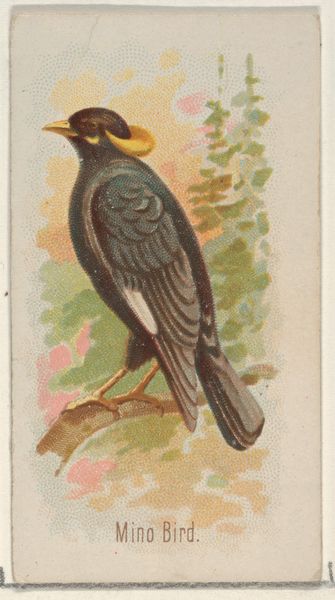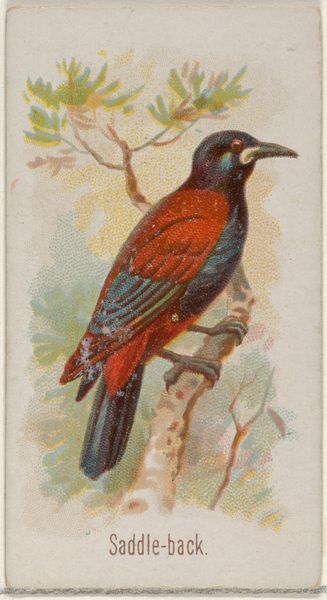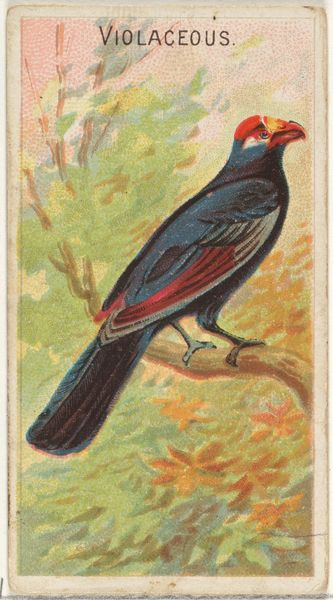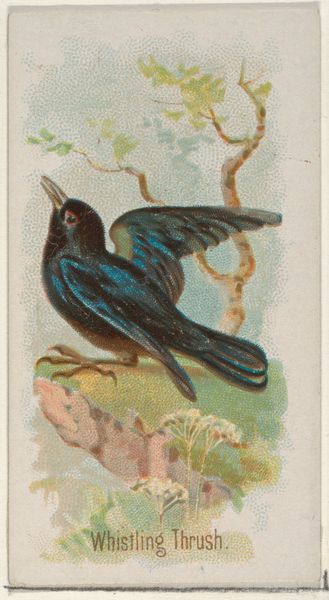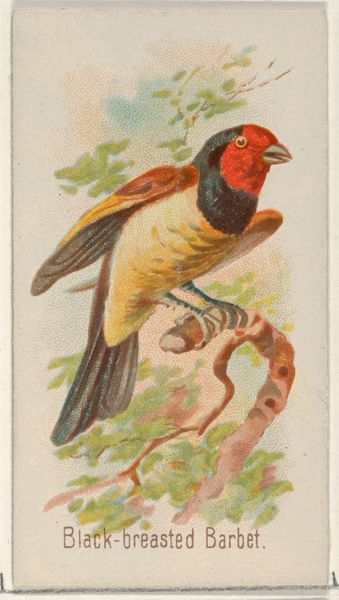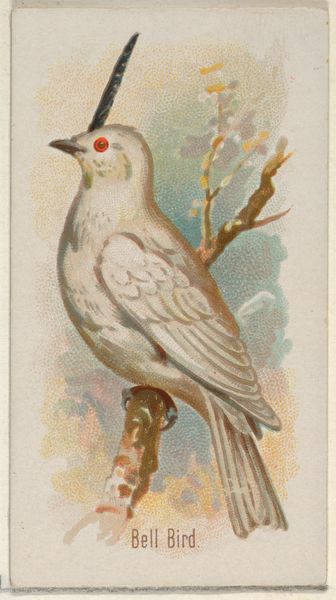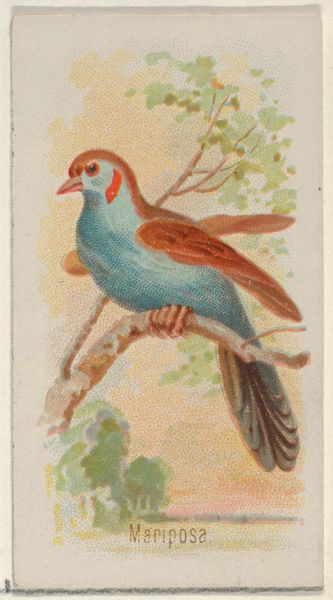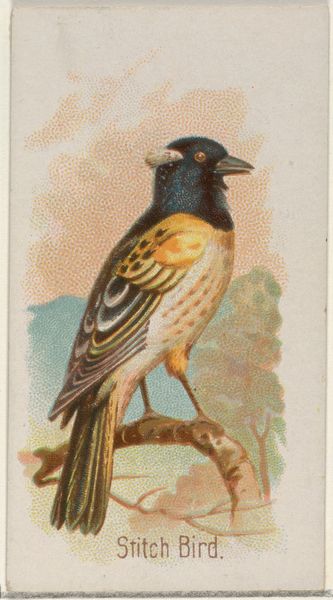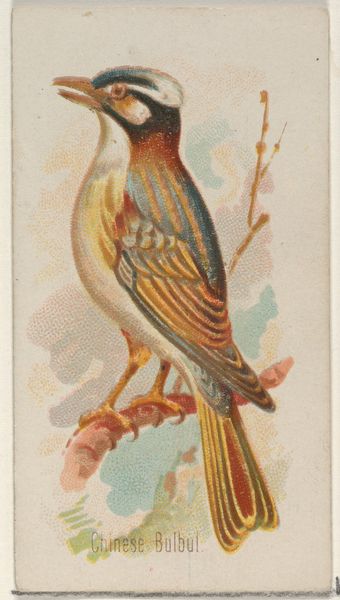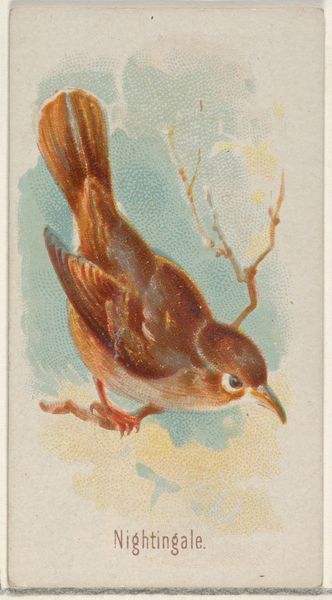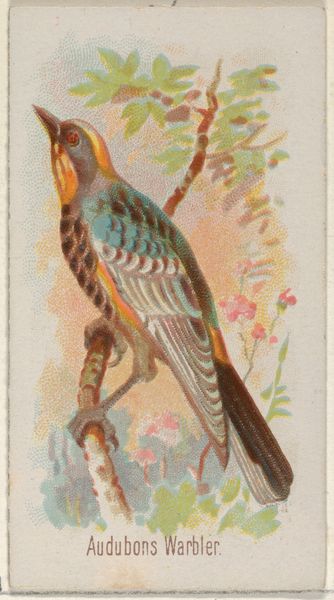
Piping Crow-shrike, from the Song Birds of the World series (N23) for Allen & Ginter Cigarettes 1890
0:00
0:00
# print
#
bird
#
coloured pencil
Dimensions: Sheet: 2 3/4 x 1 1/2 in. (7 x 3.8 cm)
Copyright: Public Domain
Curator: This is a piece from Allen & Ginter's "Song Birds of the World" series, specifically N23, depicting the Piping Crow-shrike. It dates back to 1890. What are your first thoughts? Editor: There's a certain delicateness despite the assertive pose of the bird. It almost has a watercolor effect, though it appears to be a coloured-pencil print. Curator: Yes, Allen & Ginter were quite strategic with these series. They were originally included in cigarette packs, aiming to reach a broad public. Consider how the imagery promotes specific ideals regarding wildlife at a key point in colonial history. Editor: That immediately brings to mind questions about the Crow-shrike’s original habitat, and how its depiction might have reinforced a romantic, or perhaps even possessive, attitude towards nature, land, and ownership during that era. Were they exoticizing it? Curator: Precisely! The "Song Birds of the World" title is itself a grand claim, situating this particular bird within a global hierarchy. It implies a Western, or perhaps even scientific understanding of nature and colonial power over distant lands. Think of Japonisme’s influence and how prints contributed to global views of power. Editor: Right, and beyond just colonial power, these cards functioned as miniature lessons in ornithology. The cards subtly conveyed specific information. How effective were they in shaping public perception beyond advertising purposes? How did they inform cultural norms of natural life? Curator: Indeed, and these kinds of cultural products significantly shape views on nature. Moreover, the very act of collecting these cards speaks to themes of consumerism and classification during the late 19th century, placing "nature" within a system of trade. Editor: This is definitely not just a simple picture of a bird! It holds many layers of cultural ideas. Curator: I find the intersection of commerce, art, and colonial undertones quite powerful here. We're compelled to consider the socio-political forces at play that gave rise to such an image. Editor: Agreed, recognizing how common, everyday objects like these have impacted the development of cultural values changes our own perception of both the art and historical timeline itself.
Comments
No comments
Be the first to comment and join the conversation on the ultimate creative platform.
